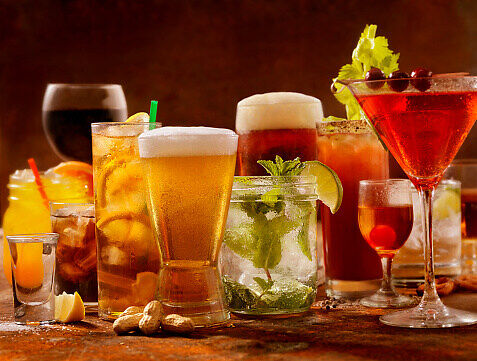Non-Alcoholic Beer: How do the Professionals Make it?
Non-alcoholic beer is created by stripping out the alcohol from standard beer. This process can be done in several different ways. Steam distillation, for example, works because alcohol boils at a lower temperature than water. Reverse osmosis is another method that can remove the alcohol. Both ways effectively preserve the beer’s flavor, but the former also leaves off-flavors and flavors intact.
The production process for both alcohol and non-alcoholic beer is very similar. Mix the ingredients, add hops, and let it ferment. The difference is in the final stages. It must be heated to convert malted barley into non-alcoholic beer. However, if the alcohol content is lower than 0.5%, the beer is made to be bottled. Depending on the recipe, making non-alcoholic beer can be done by hand or by a machine.
Making non-alcoholic beer starts in the same way as for alcoholic beer.
However, the process for making it differs slightly. Some brewers use a combination of methods. Some use the alcoholization method, while others make it using heat instead of a water-based solution. During the boiling process, the alcohol separates from the wort. It is then filtered and carbonated to remove the alcohol.
Brewers often brew non-alcoholic beer using the same equipment as alcoholic beer. Some use a blend of both techniques. Some non-alcoholic beers even combine these two methods to create a new type of brew. If you don’t have access to hops, non-alcoholic hop water is an excellent substitute for a glass of ice-cold beer.
Making non-alcoholic beer is much like brewing a typical beer, only it isn’t alcoholic. It tastes just like a regular beer but is entirely flat. Alcoholic beer is carbonated by yeast, which feeds on sugar in the malted barley, and its process isn’t ideal for many reasons, including health and safety concerns. While the method is effective, it can also inhibit the natural flavor of the brew.

Non-alcoholic beer is made by limiting or eliminating the yeast.
Most of these products are free of alcohol. Nonetheless, they do have some distinct differences. The first is that it is entirely flat. The other is carbonated with yeast, while the latter has less sugar and is healthier. Its flatness makes it easier to drink. It is also more appealing to consumers.
The second type of non-alcoholic beer is the most popular and most widely available. It is made the same way as alcoholic beer, but the ingredients are different. The alcohol-free variety is a good alternative for people who are not sure about the taste of alcoholic beers. In addition to malt and yeast, these non-alcoholic versions of the same brew are made from wheat.
Another difference is the type of fermentation.
A non-alcoholic version is a beer with lower alcohol content than its counterpart. The two types are often used interchangeably, and you may find one that suits your tastes. Nevertheless, it is essential to understand how they are made. The first type is not alcoholic. It is simply a substitute for regular beer.
The process of making non-alcoholic beer starts the same way as alcoholic beer. Then, the alcohol is removed from the mixture through vacuum distillation. This process keeps the beer’s flavor intact, and a non-alcoholic has a 0.5% ABV. It is best to check the ingredients before deciding to buy them. A quality product is a must for your health.
Not all non-alcoholic is created this way. Some are fermented traditionally, and the alcohol is removed by boiling. Other types are made by vacuum distillation. Lastly, the drink is removed by eliminating unfermentable sugars. The more unfermentable sugars in the beer wort, the more body it will have. The result is a non-alcoholic beer that tastes and smells like real beer.

